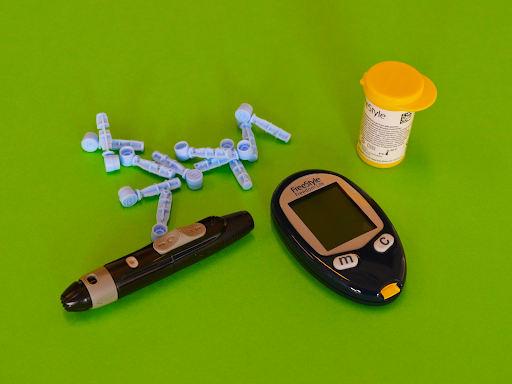Trulicity (dulaglutide) is a once-weekly injectable glucagon-like peptide-1 (GLP-1) receptor agonist used as an adjunct to diet and exercise to improve blood sugar control in adults with type 2 diabetes. It is also used to reduce the risk of major cardiovascular events in certain adults with type 2 diabetes and established cardiovascular disease. CanadianInsulin® is a prescription referral service. Prescriptions are verified with your clinic, and orders are filled by licensed Canadian pharmacies. This explainer summarizes core Trulicity information on indications, dosing, safety, and alternatives so you can have informed discussions with your clinician.
How Trulicity works
GLP-1 receptor agonists mimic a natural gut hormone that helps regulate blood glucose. Trulicity enhances glucose-dependent insulin release, suppresses glucagon when glucose is elevated, slows gastric emptying, and can reduce appetite. These effects help lower A1C and, for some, can support modest weight loss. Trulicity is not insulin and is not a replacement for rapid-acting or basal insulin when those are indicated.
Who Trulicity may be for—and who should avoid it
Trulicity is intended for adults with type 2 diabetes and may be used alone or combined with other glucose-lowering therapies such as metformin, SGLT2 inhibitors, sulfonylureas, or insulin. It is not approved for type 1 diabetes or for treating diabetic ketoacidosis.
Important safety exclusions include a personal or family history of medullary thyroid carcinoma (MTC) and multiple endocrine neoplasia syndrome type 2 (MEN2). People with a history of pancreatitis should use caution; discuss risks and alternatives with a clinician. Trulicity is generally not recommended for those with severe gastrointestinal disease (such as significant gastroparesis). If you have advanced kidney disease, dehydration risk is higher during episodes of vomiting or diarrhea—monitor closely and maintain hydration. If you are pregnant, planning pregnancy, or breastfeeding, ask your clinician about potential risks and timing, as data are limited.
Trulicity dosing: once-weekly administration
Trulicity is supplied as a single-dose prefilled pen. It is given once weekly under the skin (subcutaneously) of the abdomen, thigh, or upper arm, with or without food. You can inject at any time of day. The usual approach is to start low and increase as tolerated to reach glycemic targets.
| Step | Weekly dose | Typical minimum time at dose | Notes |
| Start | 0.75 mg | At least 4 weeks | Assess GI tolerance and glucose response |
| Titrate 1 | 1.5 mg | At least 4 weeks | Common maintenance dose for many patients |
| Titrate 2 | 3.0 mg | At least 4 weeks | For additional A1C lowering if needed |
| Titrate 3 | 4.5 mg | Ongoing | Max dose; use if lower doses insufficient and tolerated |
If you miss a dose, take it as soon as you remember provided your next scheduled dose is at least three days (72 hours) away. If fewer than three days remain until your next dose, skip the missed dose and resume your regular schedule. You can change your weekly injection day as long as the last dose was at least three days earlier.
Basic technique tips: let the pen warm to room temperature before injection; rotate injection sites each week; and follow the device’s step-by-step activation and hold time. Your care team can provide hands-on training.
Trulicity side effects: what to watch for
Most side effects are gastrointestinal and mild-to-moderate, particularly during the first weeks or after dose increases. Common effects include nausea, vomiting, diarrhea, abdominal discomfort, decreased appetite, fatigue, and constipation. Eating smaller, lower-fat meals and staying hydrated can help. If symptoms are significant or persistent, speak with your clinician about adjusting the dose or timing of escalation.
More serious but less common risks include pancreatitis (sudden severe abdominal pain that may radiate to the back, with or without vomiting), gallbladder disease (upper right abdominal pain, fever, jaundice), and kidney problems, often related to dehydration during GI illness. Seek medical care promptly if concerning symptoms arise. Rapid improvements in blood sugar can transiently worsen diabetic retinopathy in susceptible individuals; maintain regular eye exams.
Trulicity alone has a low risk of hypoglycemia. However, the risk increases when combined with insulin or sulfonylureas; clinicians may preemptively lower doses of those agents to reduce hypoglycemia risk.
Interactions and special situations
Because GLP-1 therapies slow gastric emptying, there is potential to affect how quickly some oral medications are absorbed. While dulaglutide’s effect is generally modest, exercise caution with drugs that have a narrow therapeutic index (for example, certain anti-seizure medicines) or require precise timing. If you take warfarin, your clinician may advise routine INR monitoring as usual care. Alcohol can exacerbate hypoglycemia risk when combined with other glucose-lowering agents and may worsen GI side effects.
Storage and handling
Keep pens refrigerated at 2°C–8°C (36°F–46°F) before use. Do not freeze; if a pen has been frozen, discard it. Protect from light. When needed, a pen can be kept at room temperature (up to 30°C/86°F) for a limited time, typically up to 14 days—check the product insert for the most current guidance. Do not use if the solution is cloudy, discolored, or contains particles.
Access and cost considerations
Out-of-pocket costs vary widely based on dose strength, insurance coverage, deductibles, and pharmacy dispensing fees. If you are comparing options and wondering about trulicity cost per month, keep in mind that listed prices may not reflect your plan’s negotiated rates or any copay assistance you might qualify for.
We collaborate with licensed, vetted pharmacy partners to supply authentic brand medications with a broad selection and value-focused pricing.
There is no generic dulaglutide at the time of writing. Patients sometimes lower costs by coordinating refills to avoid wastage during dose titration, using coverage optimization (e.g., preferred pharmacy networks), and discussing therapeutic alternatives if appropriate.
What patients say
Experiences can differ—some people report early GI effects that settle over a few weeks; others describe steady A1C reductions and modest weight changes over months. For perspectives on service and delivery experiences, see our customer testimonials.
Coverage tips and potential savings channels
Check formulary status with your insurer, ask about prior authorization requirements, and confirm whether mail-order or 90-day supplies are preferred. Manufacturers may offer patient support programs where eligible. You can also review current promotions that may apply to certain products or order sizes.
Alternatives to discuss with your clinician
If Trulicity is not suitable or goals are not met, alternatives include other GLP-1 receptor agonists (such as semaglutide or liraglutide), the dual GIP/GLP-1 agonist tirzepatide, SGLT2 inhibitors (which also offer kidney and heart benefits for many patients), DPP-4 inhibitors, basal insulin, thiazolidinediones, or adjusting combinations of the above. Metformin remains foundational for many unless contraindicated. The choice depends on A1C targets, weight considerations, cardiovascular and kidney health, tolerability, and cost.
Quick answers to common questions
- How soon will I see effects? Some people notice lower fasting glucose within weeks; A1C reflects the average over about three months.
- Can I take it with insulin? Yes, but coordination with your care team is important to reduce hypoglycemia risk.
- Can I change my injection day? Yes—ensure at least 72 hours between doses when making the change.
- Do I need to check blood sugar more often? If adding Trulicity to insulin or a sulfonylurea, extra monitoring is often recommended initially.
- Where can I find authoritative Trulicity information? Your medication guide and prescribing information are primary references; your clinician or pharmacist can tailor advice to your history.
Bottom line
Trulicity is a once-weekly GLP-1 therapy that can help many adults with type 2 diabetes lower A1C and, in specific groups, reduce cardiovascular risk. Safe use hinges on appropriate patient selection, gradual dose titration, awareness of gastrointestinal effects, and attention to contraindications like MTC/MEN2 and pancreatitis risk. If you are considering Trulicity, review your medical history, medications, and goals with your clinician to determine the best fit and dose.
Author note: For additional resources and ordering logistics, visit CanadianInsulin.









